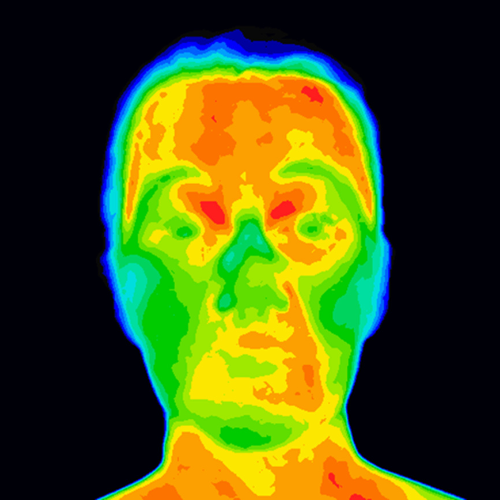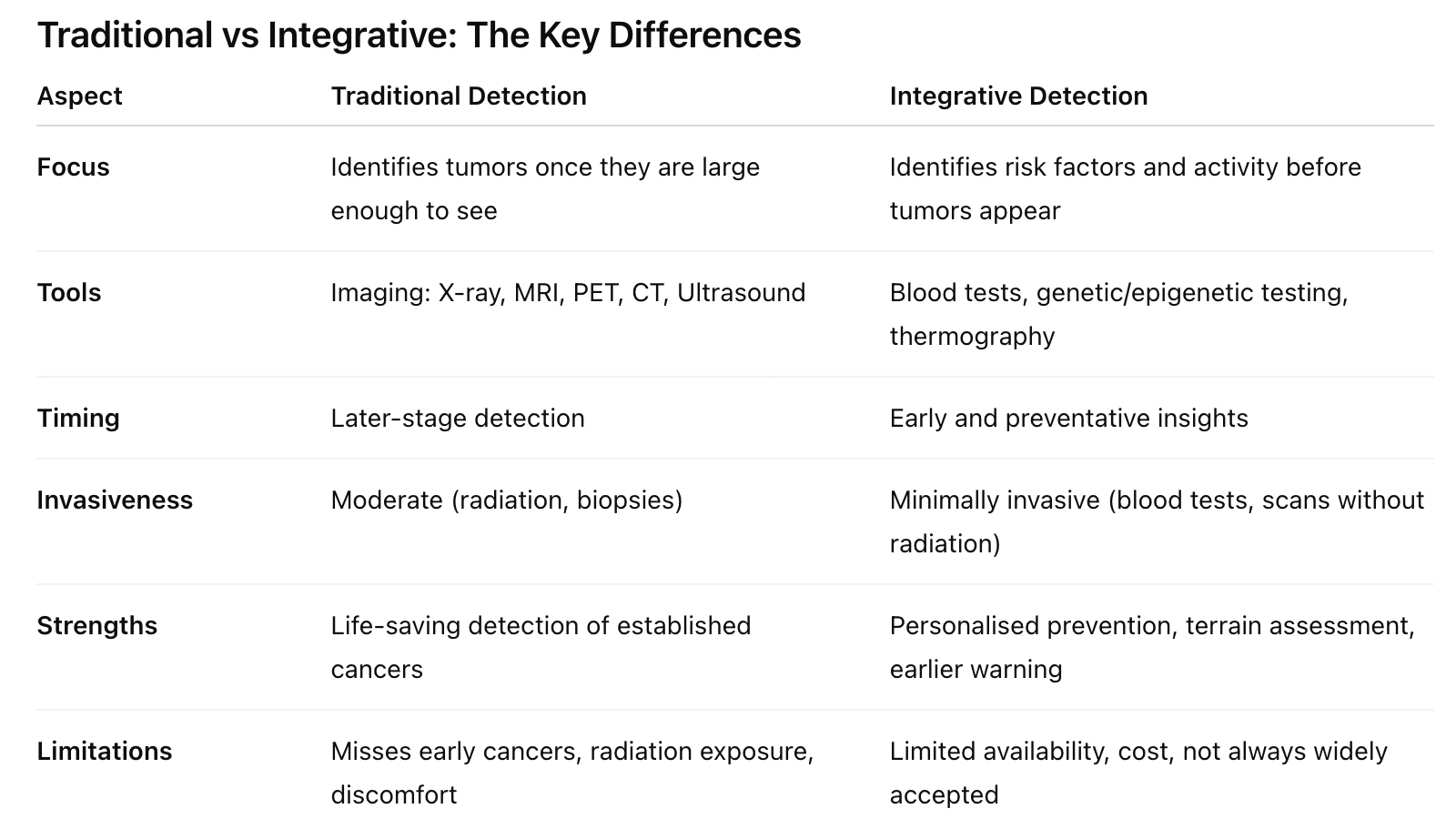Traditional vs Integrative Cancer Detection: What You Need to Know
Introduction: Two Worlds of Cancer Screening
When it comes to detecting cancer, most people are familiar with the traditional medical tools: mammograms, CT scans, PET scans, MRIs, and ultrasounds. These technologies have saved countless lives, but they also have limitations — from radiation exposure to false positives and difficulty detecting very early-stage cancers.
On the other hand, a growing field of integrative cancer detection combines conventional methods with advanced and holistic approaches — offering more personalised, less invasive, and often earlier insights into cancer risk.
So how do these two approaches compare, and what’s the best way to use them together?
Traditional Cancer Detection Tools
Mammograms
Use: X-ray of breast tissue to detect lumps or calcifications.
Strengths: Proven to reduce breast cancer deaths.
Limitations: Painful, less effective in women with dense breast tissue, involves radiation.
CT (Computed Tomography) Scans
Use: Cross-sectional images of the body.
Strengths: Good for detecting tumors in lungs, abdomen, pelvis.
Limitations: High radiation exposure; not suitable for frequent monitoring.
PET (Positron Emission Tomography) Scans
Use: Detects metabolic activity of cancer cells.
Strengths: Effective for staging cancer and checking spread.
Limitations: Expensive, not as useful for very small tumors.
MRI (Magnetic Resonance Imaging)
Use: Detailed imaging of soft tissues.
Strengths: No radiation; good for brain, spine, breast, and pelvic imaging.
Limitations: Costly; sometimes produces false positives.
Ultrasound
Use: Sound waves create images of tissues and organs.
Strengths: Safe, radiation-free, useful for breast, thyroid, abdominal screening.
Limitations: Less effective for deep tissues; operator dependent.
Integrative Cancer Detection Approaches
Liquid Biopsies & Blood Tests
Examples: RGCC, Onco-D-Clare, circulating tumor DNA tests.
Strengths: Detect cancer activity before tumors appear on scans.
Benefits: Minimally invasive, helpful for monitoring recurrence.
Thermography
Use: Measures heat and blood flow patterns.
Strengths: Non-invasive, radiation-free.
Limitations: Best as a complementary tool, not a standalone diagnostic.
Advanced Ultrasound (ABUS, Elastography)
Benefits: Improved accuracy in dense breast tissue.
Use: Detects stiffness or unusual patterns in tissue.
Genetic & Epigenetic Testing
Genetic tests: Identify inherited cancer risks (e.g., BRCA1/2).
Epigenetic tests: Show how lifestyle and environment influence gene expression.
Strengths: Personalised prevention strategies.
Oligoscan & Mineral Testing
Use: Identifies heavy metals and mineral imbalances.
Strengths: Addresses environmental and nutritional terrain linked to cancer risk.
Key Takeaways
Traditional detection tools like mammograms and CT scans remain critical.
Integrative tools (liquid biopsies, thermography, epigenetic testing) can spot cancer activity earlier.
Combining both approaches gives the most accurate, preventative, and personalised cancer care.
Empowering patients with more options improves outcomes and reduces fear.
Final Thoughts
Cancer detection doesn’t have to be an either/or choice. By integrating conventional and advanced screening tools, patients gain the best of both worlds — life-saving diagnostics and proactive prevention.
Call to Action
At Cancer Care NZ, we believe in empowering you with knowledge and access to both traditional and integrative cancer detection options. Visit The Healing Room to explore more resources and learn how to take control of your health.


